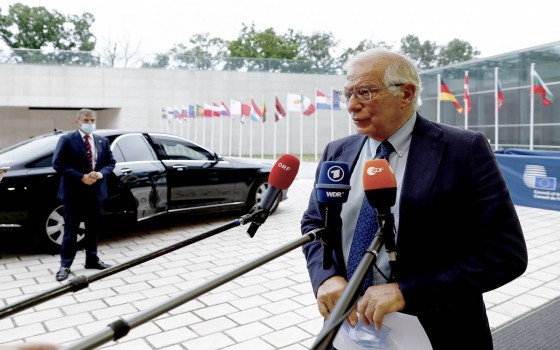
More than 60 percent of EU soils are unhealthy. A new framework for healthy and resilient soils to ensure safe food and cleaner water for future generations.

- Europe and Arabs
- Thursday , 10 April 2025 7:20 AM GMT
Brussels: Europe and the Arabs
The Council of the European Union today reached a provisional agreement with the European Parliament on a directive establishing a framework for soil monitoring to improve soil resilience and manage the risks of contaminated sites. The directive will also define principles for mitigating the impacts of land grabbing, with a focus on soil embankment and removal.
Healthy soils underlie 95% of our food, host more than 25% of the world's biodiversity, and represent the largest terrestrial carbon store on the planet. Yet, soil is a finite resource, and more than 60% of EU soils are not in good health. A European statement issued in Brussels quoted Paulina Henning-Kloska, Poland's Minister for Climate and Environment, whose country holds the rotating EU presidency, as saying, "The provisional agreement maintains the ambitious, non-binding goal of achieving healthy soils by 2050. The agreement still needs confirmation by both institutions. With the agreement reached today, we have established the first EU framework for assessing and monitoring soils across Europe. The time has come to act, as over 60% of European soils are unhealthy and getting worse. Healthy, resilient soils are essential to ensuring safe, nutritious food and cleaner water for future generations."
A comprehensive monitoring framework
Member states, with the support of the Commission, will first monitor and assess the health of all soils on their territory, so that authorities across the EU can provide appropriate support to prevent and address soil degradation.
Both the Council and Parliament agreed on the need for a robust and coherent monitoring framework, with comparable data. They agreed that member states would identify sampling points for monitoring, based on a common EU methodology. The legislators agreed Participants take the first steps towards monitoring PFAS and pesticides. Soil health assessment
The provisional agreement maintains the concept of common soil descriptors (physical, chemical, and biological parameters), as outlined in the Common Approach and the Commission's initial proposal.
It also introduces categories for soil health descriptors based on the target values and trigger values defined in the Council's Common Approach:
Sustainable, non-binding target values at EU level reflecting long-term objectives
Operational trigger values, defined at Member State level for each soil trigger to prioritize provisions and gradually implement them, leading to a healthy soil condition
Mitigating the impacts of land acquisition
The new directive will define mitigation principles related to land acquisition, focusing on its most prominent aspects: soil immobilization and removal. Member States will take these principles into account, while respecting national decisions on spatial planning (including housing, mining, sustainable agriculture, and the energy transition).
The provisional agreement now needs to be approved by the Council and Parliament. It will then be formally adopted by both institutions after a legal and linguistic review. According to the EU Soil Strategy, presented by the Commission in 2021, the lack of dedicated EU legislation was identified as a major reason for the alarming state of EU soils. To ensure the same level of protection for soil as for water, the marine environment, and air in the EU, the Commission introduced the Soil Monitoring Directive on 5 July 2023.
According to a report published earlier by the Spanish newspaper La Vanguardia, to improve soil, the battle is focused on pesticides, insecticides, and other chemical elements that, in Brussels' view, have led to the serious degradation of arable land.
The idea is that by 2050, soils will no longer be subject to the current erosion and deterioration, fostering innovation and sustainability in the agriculture and livestock sectors. Progress is being driven by new genomic technologies that reduce the use of chemical pesticides and ensure the use of sustainable, high-quality, and more diverse seeds and propagating materials. The Commission estimates that between 60 and 70% of the world's soil is unhealthy, and erosion removes billions of tons of soil each year, meaning the upper fertile layer disappears. This translates into a cost of approximately €50 billion per year. The idea is for farmers to adopt more appropriate methods to enhance the fertility and productivity of their land. This means reducing water and nutrient consumption.












No Comments Found